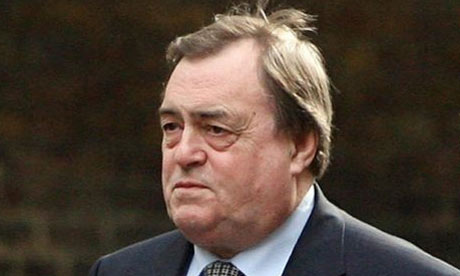 Obama’s speech at the UN yesterday may have disappointed some commentators who were looking for more specifics for progress than he provided, but from another perspective it was a most notable occasion. The world’s leading politician, speaking in a global forum, was unequivocal about the seriousness of the issue of climate change:
Obama’s speech at the UN yesterday may have disappointed some commentators who were looking for more specifics for progress than he provided, but from another perspective it was a most notable occasion. The world’s leading politician, speaking in a global forum, was unequivocal about the seriousness of the issue of climate change:
That so many of us are here today is a recognition that the threat from climate change is serious, it is urgent, and it is growing. Our generation’s response to this challenge will be judged by history, for if we fail to meet it – boldly, swiftly, and together – we risk consigning future generations to an irreversible catastrophe.
No nation, however large or small, wealthy or poor, can escape the impact of climate change. Rising sea levels threaten every coastline. More powerful storms and floods threaten every continent. More frequent drought and crop failures breed hunger and conflict in places where hunger and conflict already thrive. On shrinking islands, families are already being forced to flee their homes as climate refugees. The security and stability of each nation and all peoples – our prosperity, our health, our safety – are in jeopardy. And the time we have to reverse this tide is running out.
But he affirmed that we can achieve this reversal. Acknowledging the slowness of mankind to respond to or even recognise the magnitude of the threat, in which the US has shared, he proclaimed a new era, evidencing the fact that the United States has done more to promote clean energy and reduce carbon pollution in the last eight months than at any other time in its history.
He then went on to list what the US government was planning.
We’re making our government’s largest ever investment in renewable energy – an investment aimed at doubling the generating capacity from wind and other renewable resources in three years. Across America, entrepreneurs are constructing wind turbines and solar panels and batteries for hybrid cars with the help of loan guarantees and tax credits – projects that are creating new jobs and new industries. We’re investing billions to cut energy waste in our homes, buildings, and appliances – helping American families save money on energy bills in the process. We’ve proposed the very first national policy aimed at both increasing fuel economy and reducing greenhouse gas pollution for all new cars and trucks – a standard that will also save consumers money and our nation oil. We’re moving forward with our nation’s first offshore wind energy projects. We’re investing billions to capture carbon pollution so that we can clean up our coal plants. Just this week, we announced that for the first time ever, we’ll begin tracking how much greenhouse gas pollution is being emitted throughout the country. Later this week, I will work with my colleagues at the G20 to phase out fossil fuel subsidies so that we can better address our climate challenge. And already, we know that the recent drop in overall U.S. emissions is due in part to steps that promote greater efficiency and greater use of renewable energy.
This last sentence bears out Lester Brown’s claim that the reduction in US emissions was not all down to the recession. The announcements about tracking greenhouse gas pollution and working with the G20 to phase out fossil fuel subsidies are new developments. The G20 includes Saudi Arabia.
Obama then went on to point to the most important US development of all, the energy and climate bill “that would finally make clean energy the profitable kind of energy for American businesses and dramatically reduce greenhouse gas emissions”. It has already passed in the House of Representatives and he spoke of his intention to engage with Senate committees as the bill progressed there.
Moving on to the international scene he spoke of US actions to engage with other nations:
Because no one nation can meet this challenge alone, the United States has also engaged more allies and partners in finding a solution than ever before. In April, we convened the first of what have now been six meetings of the Major Economies Forum on Energy and Climate here in the United States. In Trinidad, I proposed an Energy and Climate Partnership for the Americas. We’ve worked through the World Bank to promote renewable energy projects and technologies in the developing world. And we have put climate at the top of our diplomatic agenda when it comes to our relationships with countries from China to Brazil; India to Mexico; Africa to Europe.
His summation at this point justifiably used the word historic:
Taken together, these steps represent an historic recognition on behalf of the American people and their government. We understand the gravity of the climate threat. We are determined to act. And we will meet our responsibility to future generations.
Then on to the hard part ahead:
But though many of our nations have taken bold actions and share in this determination, we did not come here today to celebrate progress. We came because there is so much more progress to be made. We came because there is so much more work to be done.
It won’t be easy and the difficulties are compounded by the global recession
The developed countries that have caused much of the climate damage to the present have a responsibility to lead. But the rapidly-growing developing nations that will produce nearly all the growth in global carbon emissions in the decades ahead must do their part as well. He acknowledged that some of them have already made great strides with the development and deployment of clean energy.
We cannot meet this challenge unless all the largest emitters of greenhouse gas pollution act together. There is no other way.
He differentiated the other poorer and most vulnerable developing nations and their need to be put on the path to sustainable growth. They don’t have the resources of nations like the US or China, but they have the most immediate stake in a solution.
For these are the nations that are already living with the unfolding effects of a warming planet – famine and drought; disappearing coastal villages and the conflict that arises from scarce resources. Their future is no longer a choice between a growing economy and a cleaner planet, because their survival depends on both. It will do little good to alleviate poverty if you can no longer harvest your crops or find drinkable water.
That is why we have a responsibility to provide the financial and technical assistance needed to help these nations adapt to the impacts of climate change and pursue low-carbon development.
No argument with Oxfam here.
So where does the world now stand?
As we meet here today, the good news is that after too many years of inaction and denial, there is finally widespread recognition of the urgency of the challenge before us. We know what needs to be done. We know that our planet’s future depends on a global commitment to permanently reduce greenhouse gas pollution. We know that if we put the right rules and incentives in place, we will unleash the creative power of our best scientists, engineers, and entrepreneurs to build a better world. And so many nations have already taken the first steps on the journey towards that goal.
And a final summons to sustained effort:
But the journey is long. The journey is hard. And we don’t have much time left to make it. It is a journey that will require each of us to persevere through setback, and fight for every inch of progress, even when it comes in fits and starts. So let us begin. For if we are flexible and pragmatic; if we can resolve to work tirelessly in common effort, then we will achieve our common purpose: a world that is safer, cleaner, and healthier than the one we found; and a future that is worthy of our children.
Yes, it’s rhetoric. But it’s without precedent. It’s committed and definite. It carries with it a logic that demands expression in concrete effective measures. It acknowledges the political difficulties but asserts they must be overcome. I think we may take comfort and courage from it. It looks like David Orr’s transformational leadership to me.
Like this:
Like Loading...
 Barack Obama is matching his words with action. Four days after his MIT speech on renewable energy he has announced, under the Recovery Act, $3.4 billion in grants to improve the US electricity grid. The grants go to 100 partners with plans to install smart grid technologies in their area. The government money will be matched by industry funding for a total public-private investment worth over $8 billion.
Barack Obama is matching his words with action. Four days after his MIT speech on renewable energy he has announced, under the Recovery Act, $3.4 billion in grants to improve the US electricity grid. The grants go to 100 partners with plans to install smart grid technologies in their area. The government money will be matched by industry funding for a total public-private investment worth over $8 billion.
 Obama’s
Obama’s  Tony Blair is not the only former UK Labour Party leader to seek to
Tony Blair is not the only former UK Labour Party leader to seek to  Watching Stephen Sackur’s BBC Hard Talk
Watching Stephen Sackur’s BBC Hard Talk